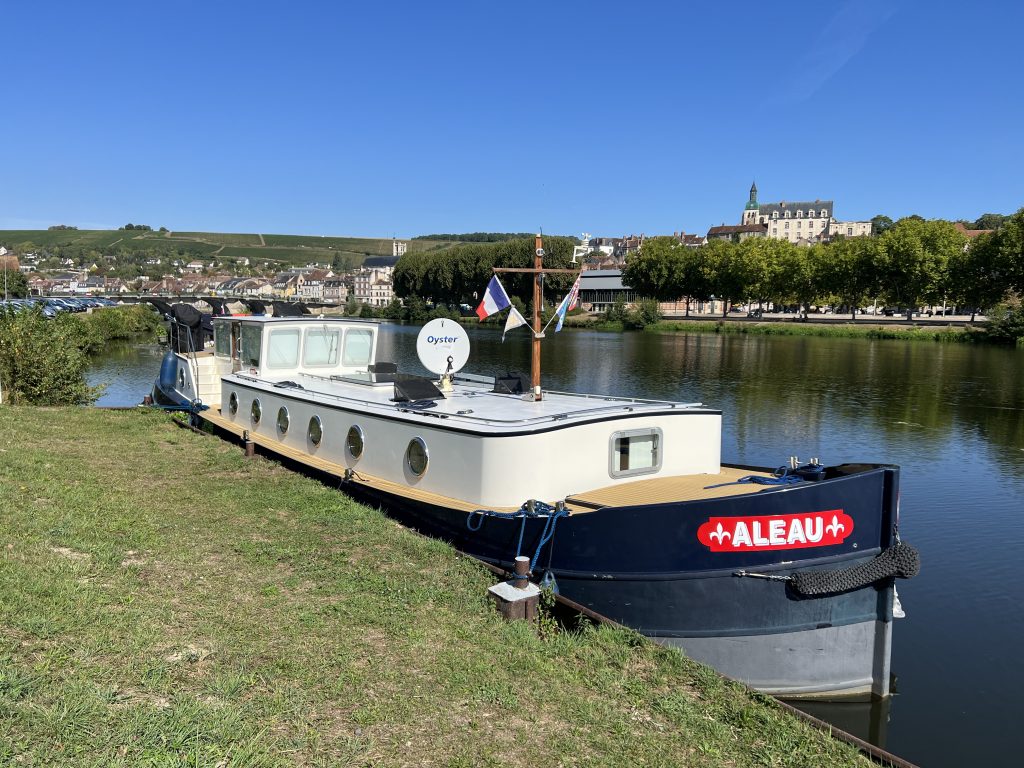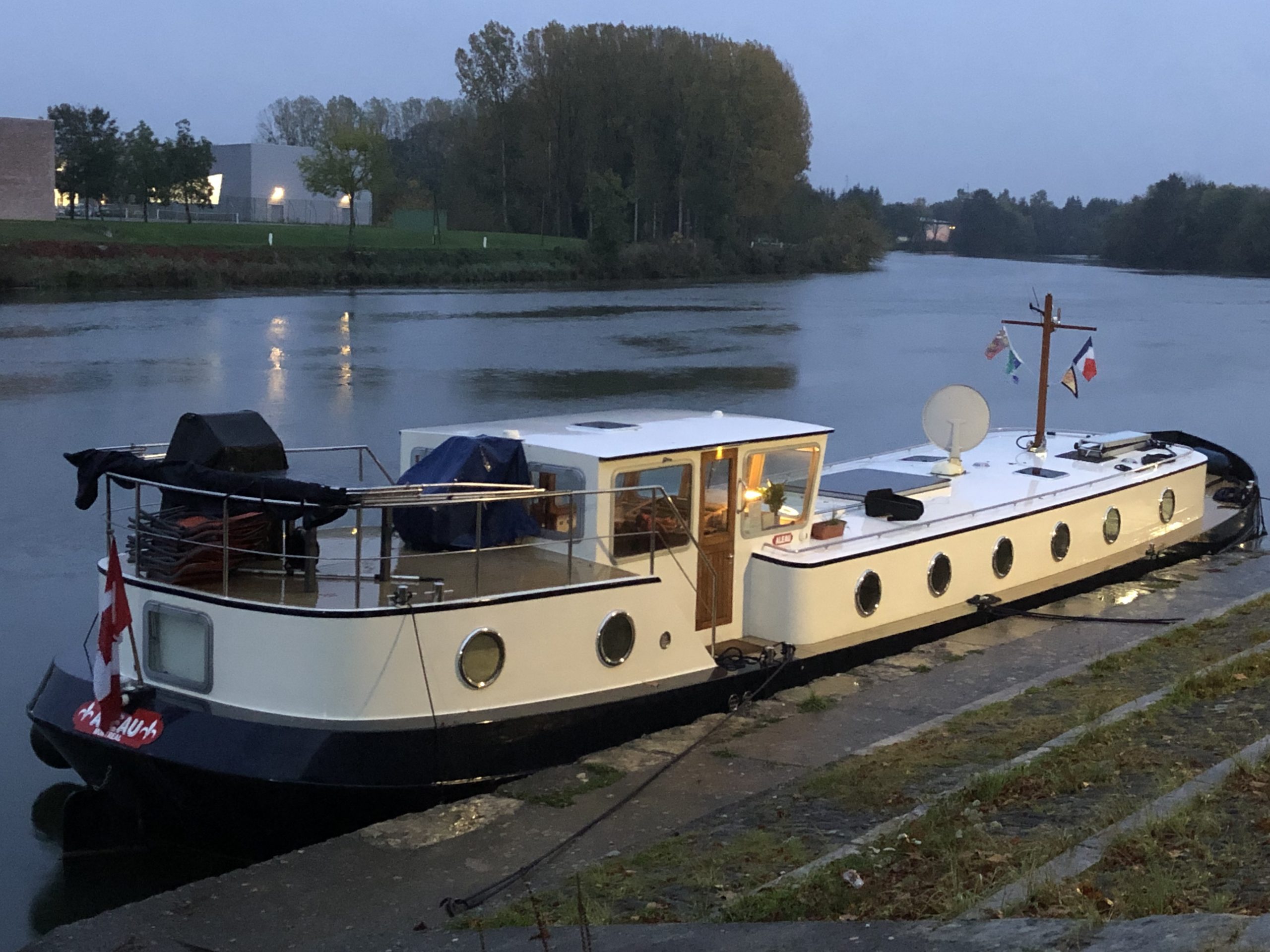One of the more frequent questions we get asked is “How did you end up doing this?” – or words to that effect.
For me, it began in the summer of 1984. I went, along with a former girlfriend, for a three-month trip to Europe. (A mistake by CBC management allowed me to keep accumulating all the overtime I worked as “Time Off in Lieu.” Over the years, that totalled three months. But I digress.)
I fell in love with France the moment we arrived. And with barging shortly thereafter. One day, as we were driving alongside the Canal de Bourgogne, we stopped to watch a “commercial” pass through a lock. That’s it in the two photos below. I have hung onto them ever since.
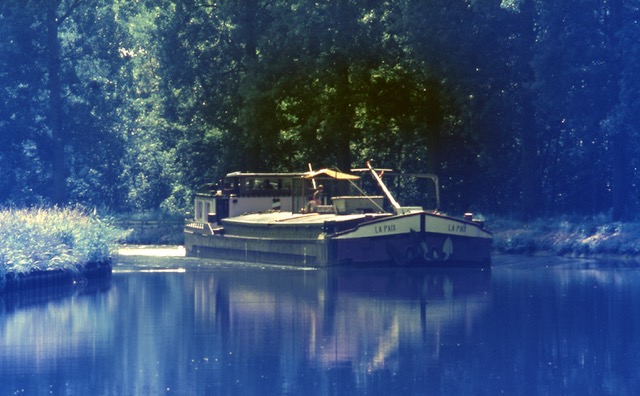
I was enthralled, captivated – hooked.
I watched as the husband piloted the barge and the wife handled the ropes in the lock. Their two children were safe inside a screened-in playpen.
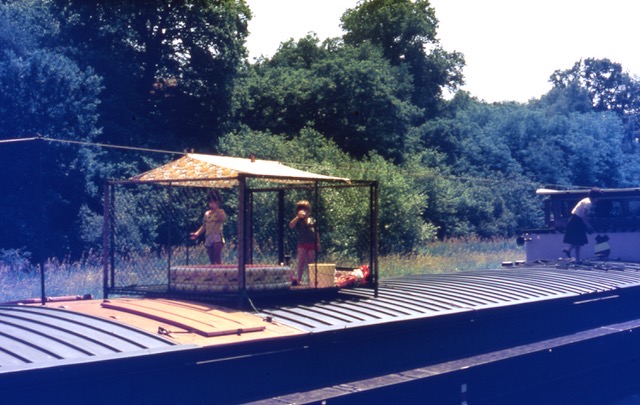
This was decades before recreational barging became popular. But I knew then, this is what I want to do – live on a barge and cruise at 6 km/h through France. I had just started my career in journalism. I was a long way from retiring and being able to pack up and move to France. But the dream never died.
When I finally did retire in 2011, Jeannie and I reconnected – after a 44-year separation. I began talking about this dream with her. “I don’t do boats. I don’t like water.” Okay, this may not happen. I can live with that. It would make no sense to do anything she was not fully happy doing.
We took tiny steps. First, we joined the Dutch Barge Association. In July 2016, we went to the DBA Rally in Briare, France.
We finally got to see “recreational” barges – and meet the people who have chosen the barging lifestyle. It was the first “turning point” for Jeannie.
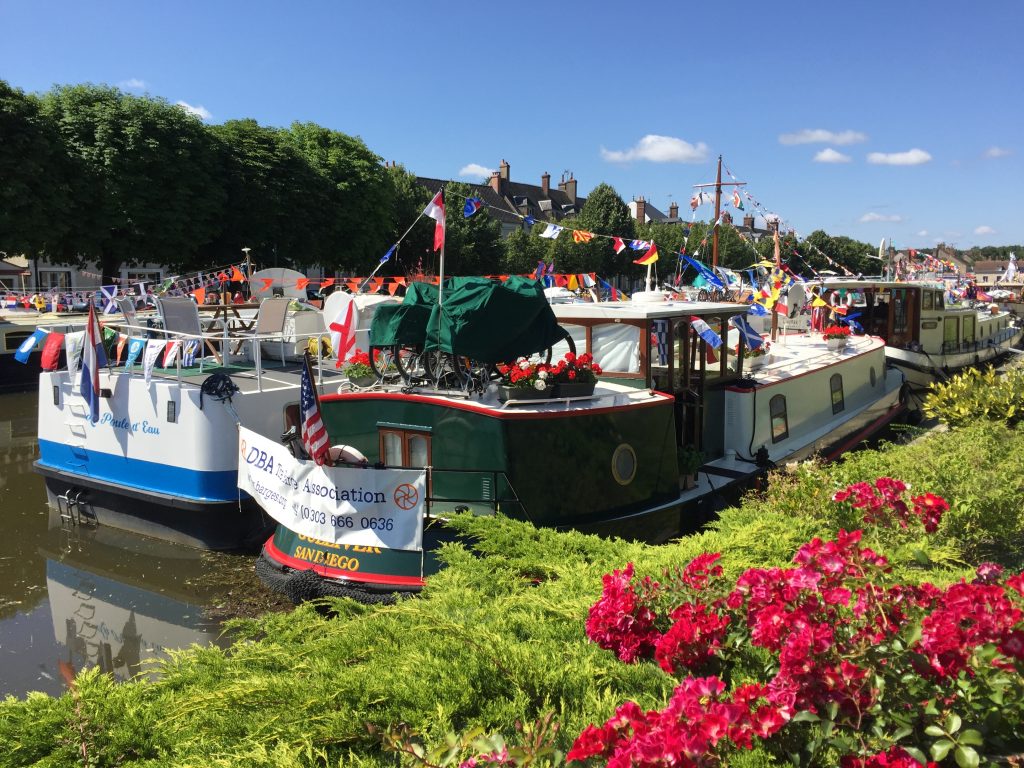
There were a lot of barges for us to check out.
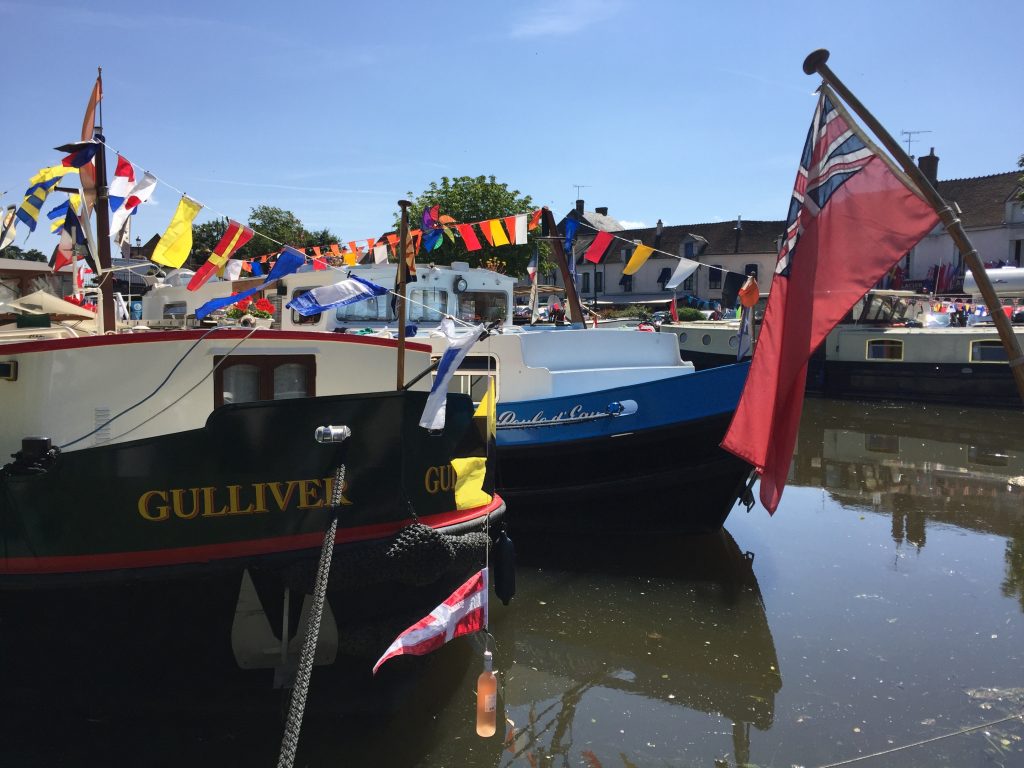
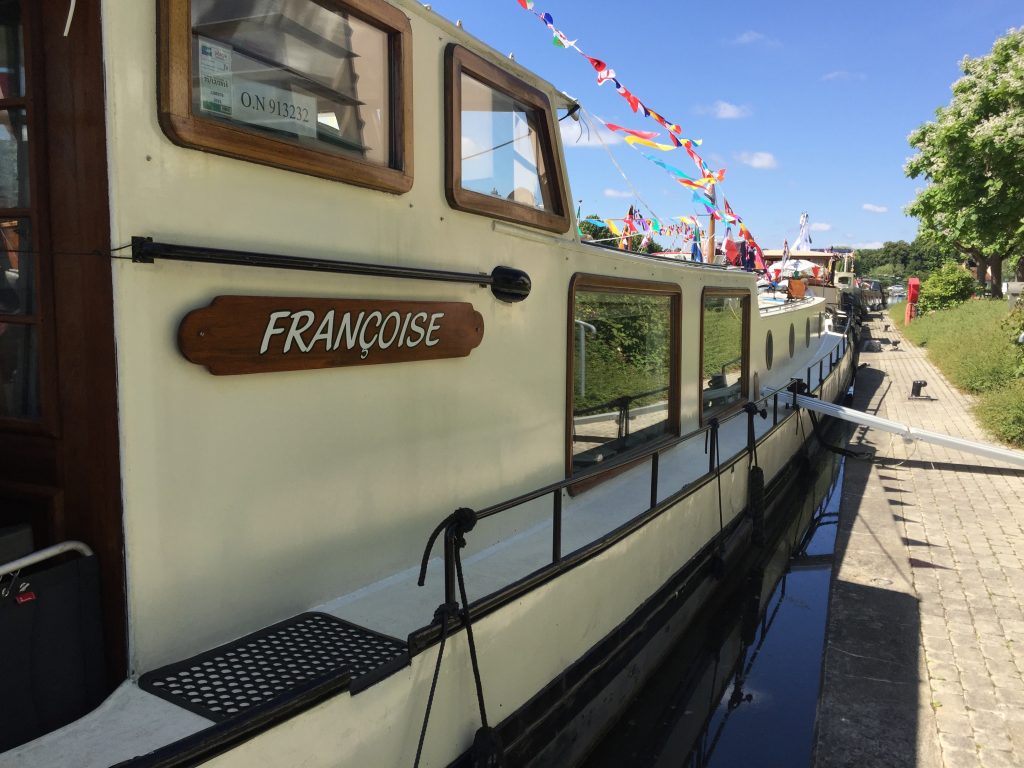
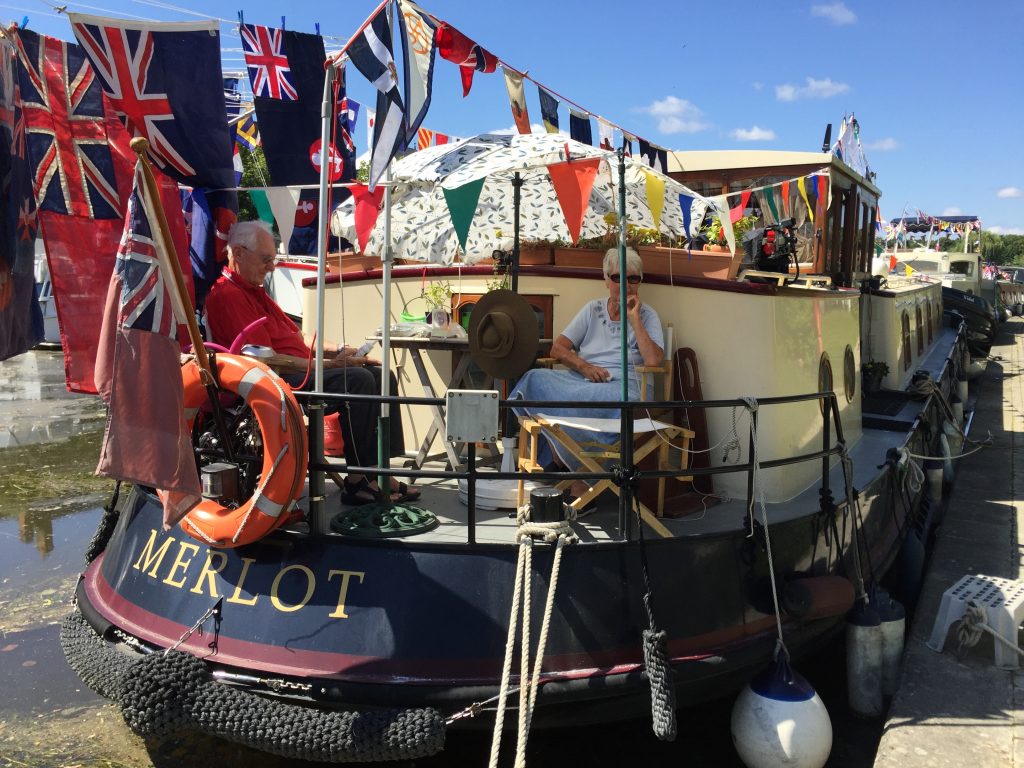
We had joined the DBA long before the rally. I had been exchanging e-mails with other members. They spent hours telling us about barging and encouraged us to follow our dream. (Okay, it was just my dream.) In what I still think was a remarkable (or maybe foolish) decision, one of them invited us to spend a few days cruising with them onboard their barge, Catharina Elisabeth. We had never met. All Ian knew about us was we lived in Canada. But he was willing to allow two total strangers to spend a few days living with him and his wife, Lisette, in close quarters. We jumped at the opportunity – and met them for the first time at the DBA Rally in Briare. And they still were willing to let us join them.
Catharina Elisabeth was moored in Belgium. After the rally, we drove there, joined Ian and Lisette, and made ourselves at home on Catharina Elisabeth.
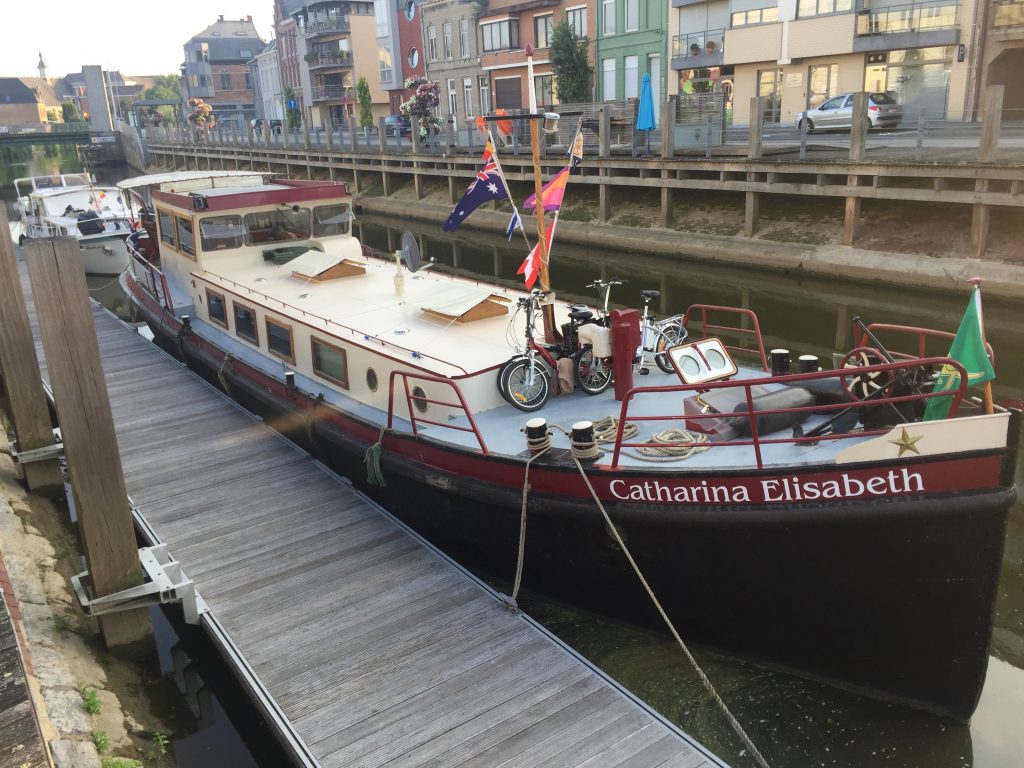
It was a perfect opportunity for Jeannie and me to learn the ropes of barging. (I’ve since been told to never, ever, wear gloves when handling ropes.)

In what was even braver than inviting us aboard Catharina Elisabeth, Ian allowed me to take the helm.
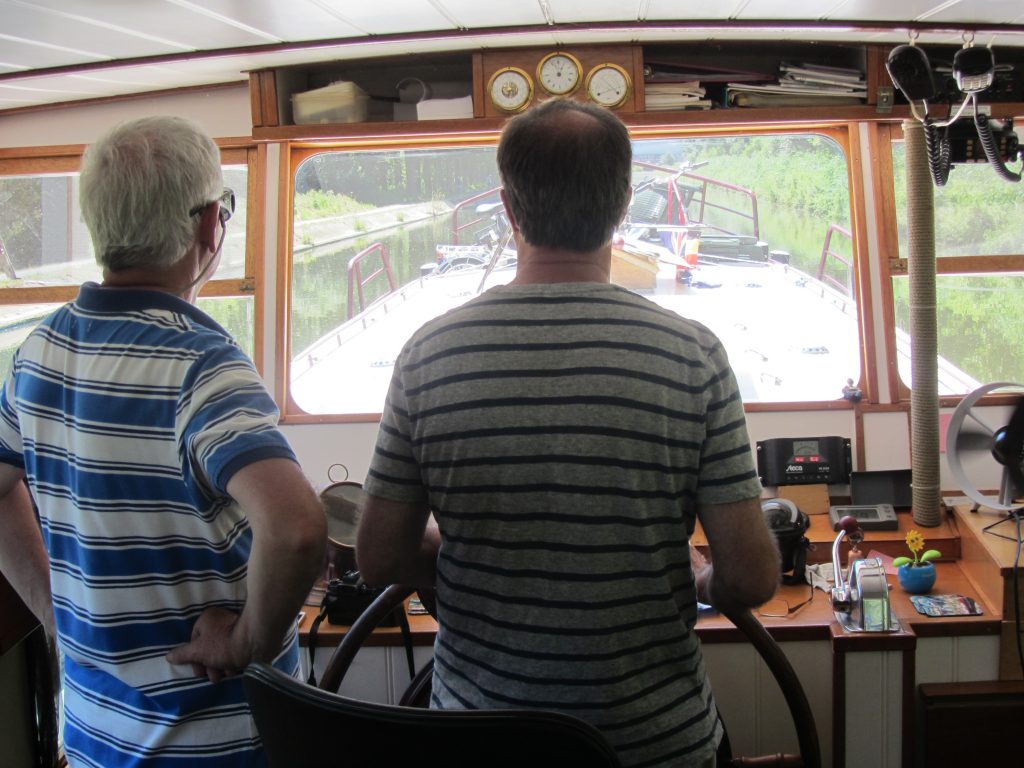
Braver still, he left Jeannie and me alone in the wheelhouse as he went and relaxed (?) at the bow.
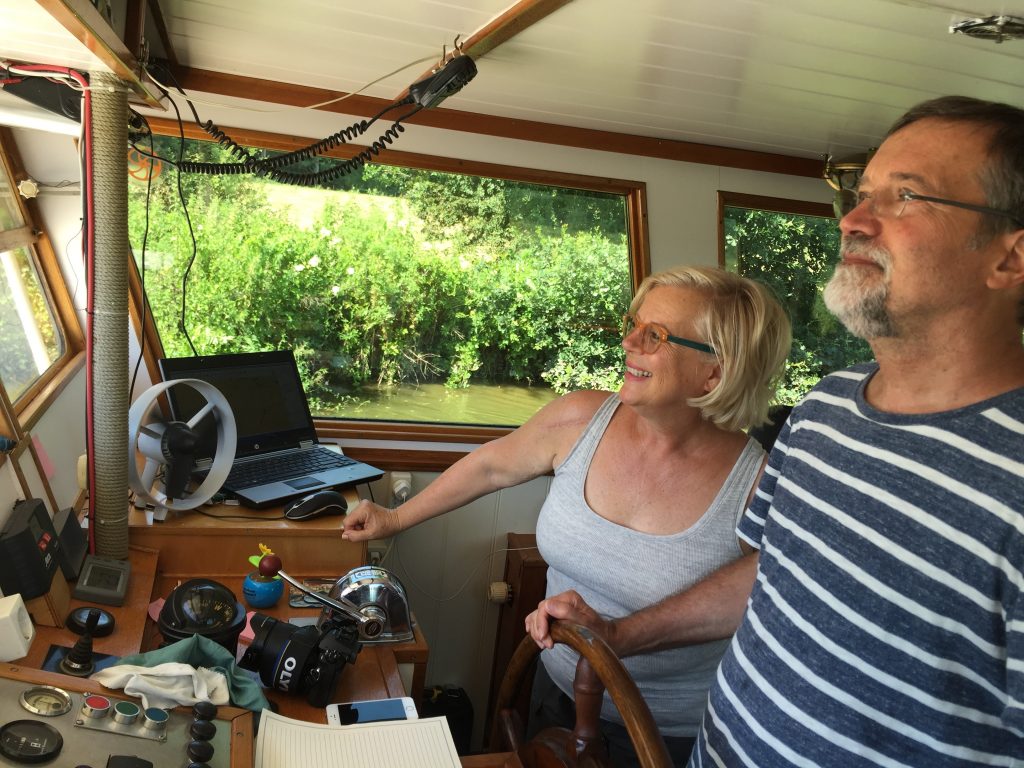
We quickly learned that barging is not just about slowly cruising the waterways, it is also about eating. In this case, duck confit. That’s Lisette. Ian is behind the camera.
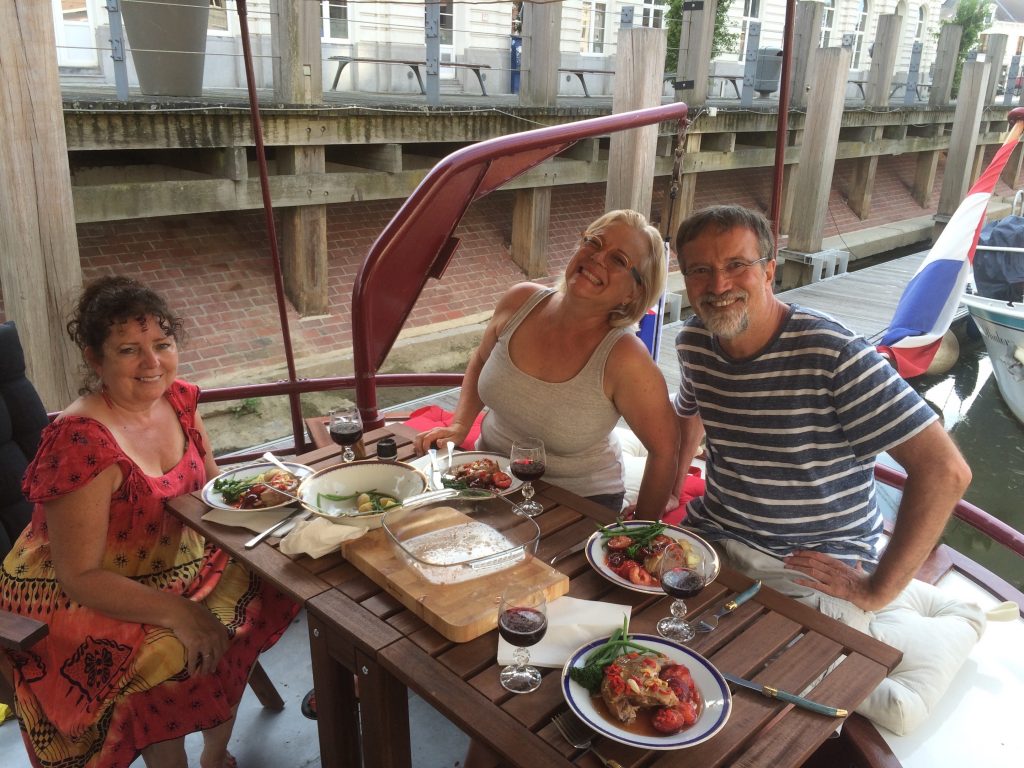
We are grateful to Ian and Lisette for letting us see what life aboard a barge is like.
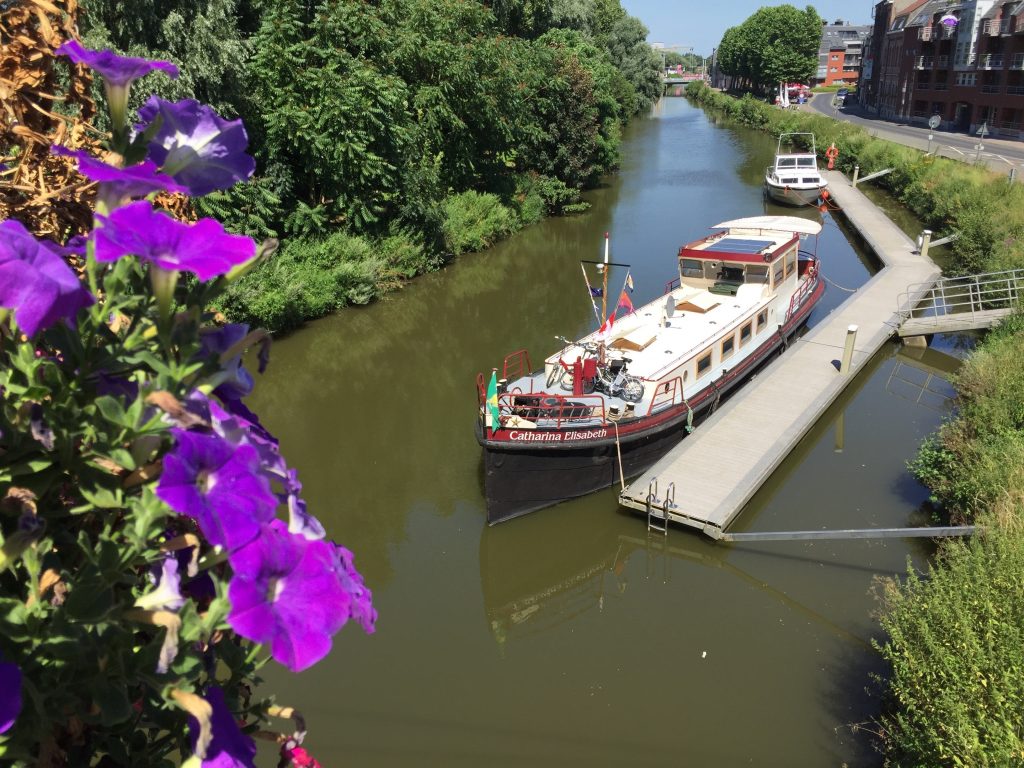
Exploring the interior of barges attending the DBA Rally in Briare was the first turning point for Jeannie. Spending time with Ian and Lisette aboard Catharina Elisabeth was the second. But we weren’t there yet.
I decided to forge ahead and get the licenses I would need – just in case.
In October 2017, I got my International Certificate of Competence (ICC) through Bargecraft, a barging school on the Canal du Midi. Run by Steve and his wife Jo onboard their barge Somewhere. There is probably no prettier classroom anywhere in the world.
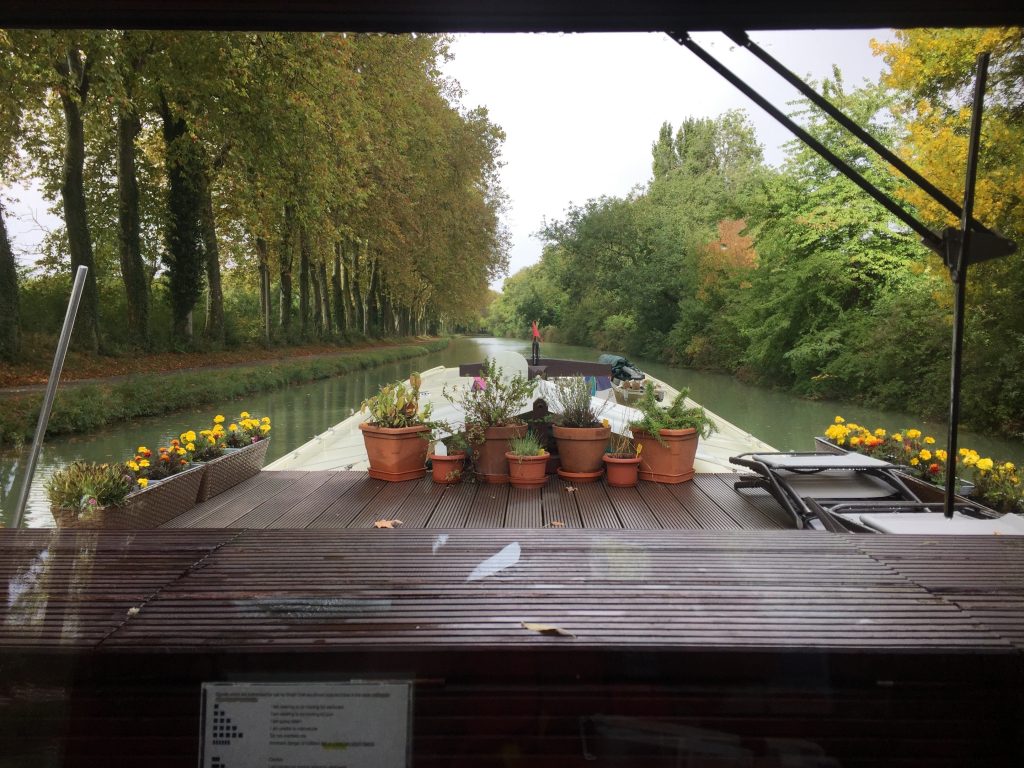
It’s France. The lock is closed for lunch. So is Barging School. We tie up and eat.
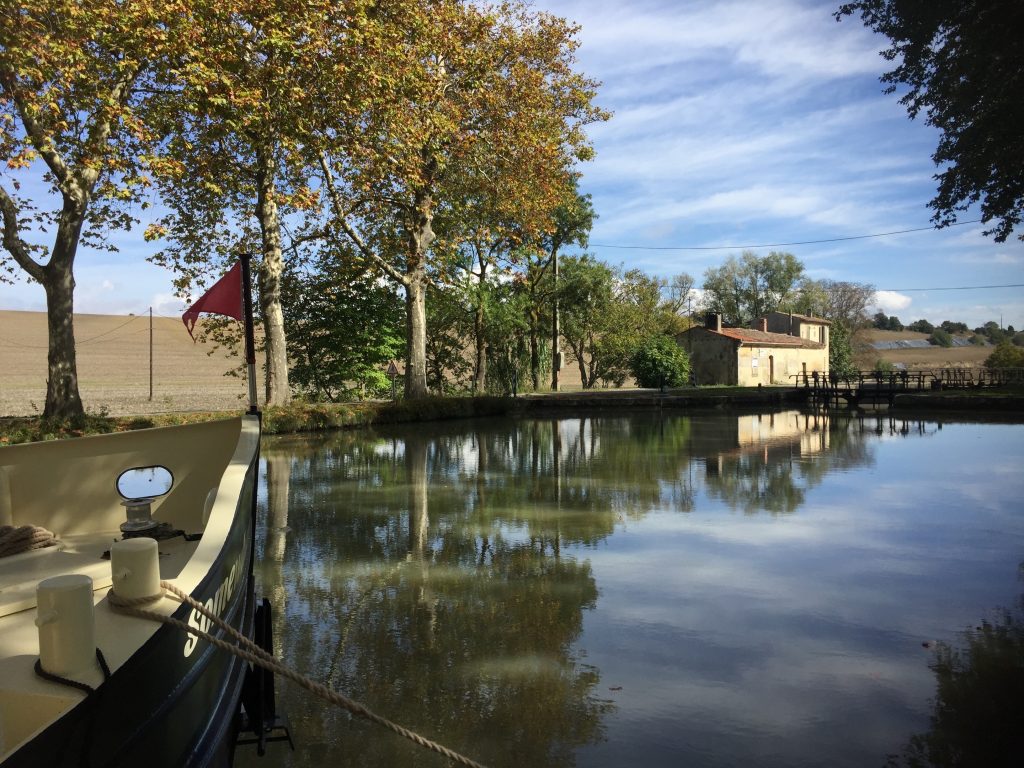
I receive my license. Now, the big test. After three days on Catharina Elisabeth, Jeannie is feeling a bit more comfortable on the water. Time to do it on our own. We rent a 15-metre steel-hulled barge – the biggest boat one can rent in France. It has two cabins. To save money, two friends (former CBC colleagues) join us.
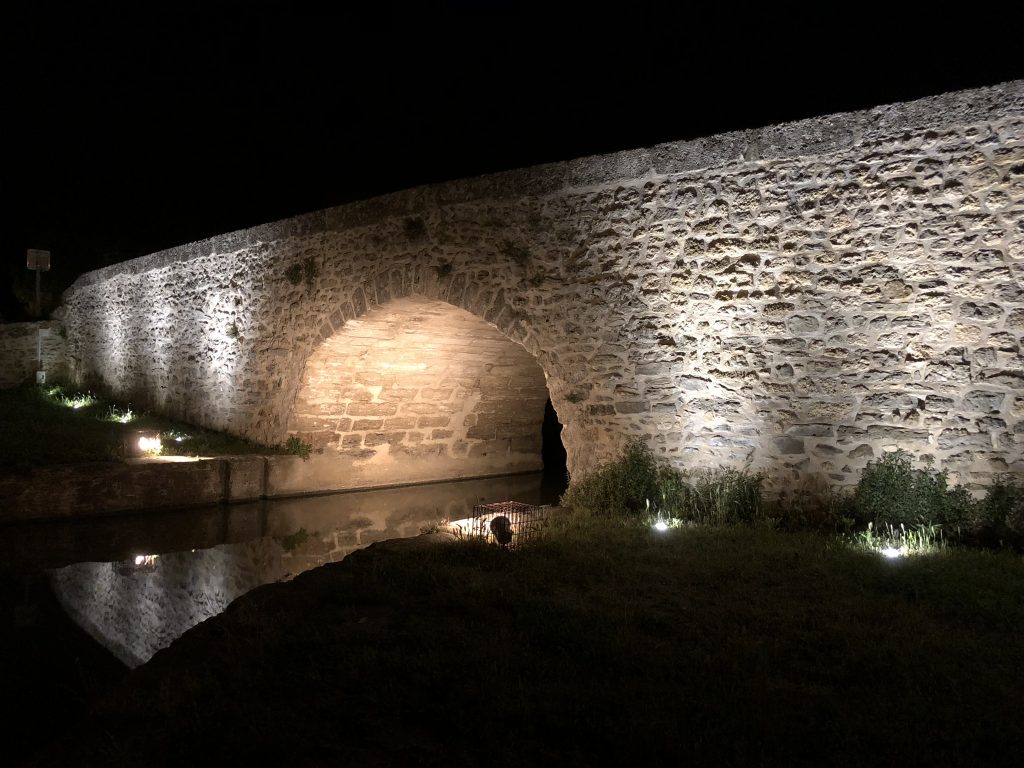
We pick up Bosun Higgs in Capestang. The plan is a one-way, one-week rental, ending in Castelnaudry. Or at least that was the plan. The first challenge was getting through the Capestang bridge – the tightest in France. And it comes less than 100-metres after picking up Bosun Higgs.
That Capestang Bridge was my Baptism to Barging. It went well. The rest of the voyage, not so well.
It wasn’t the canal per se. The Canal du Midi is gorgeous.
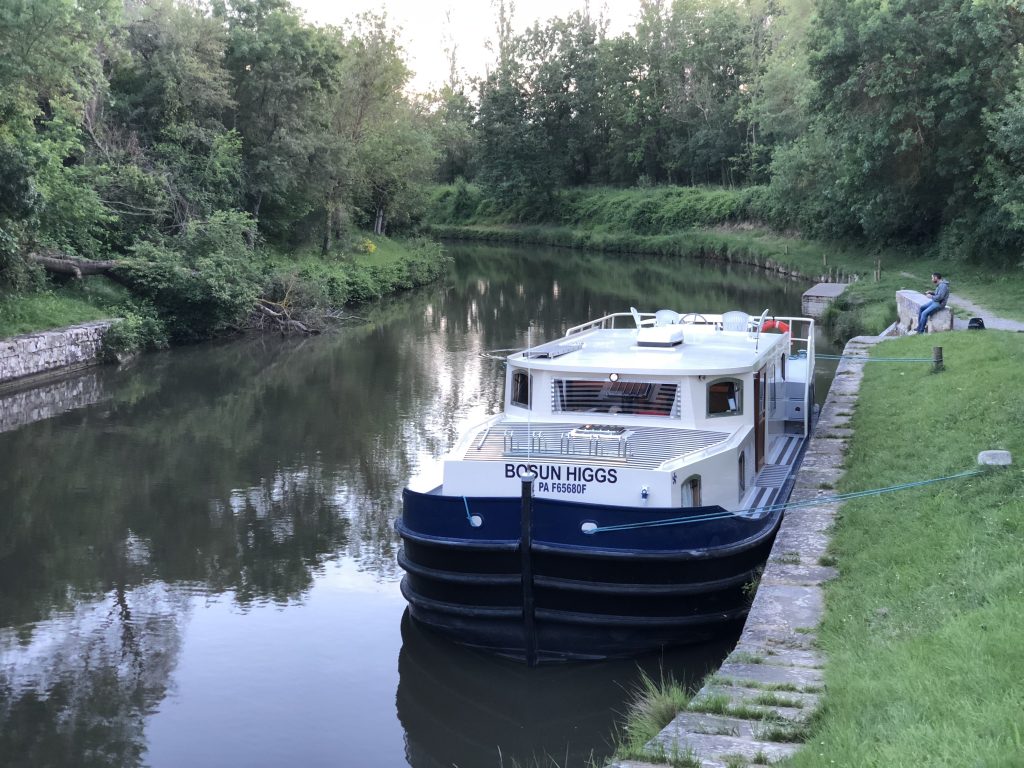
We experienced our first “pont canal” – a highway overpass for barges. Built before there were highways.
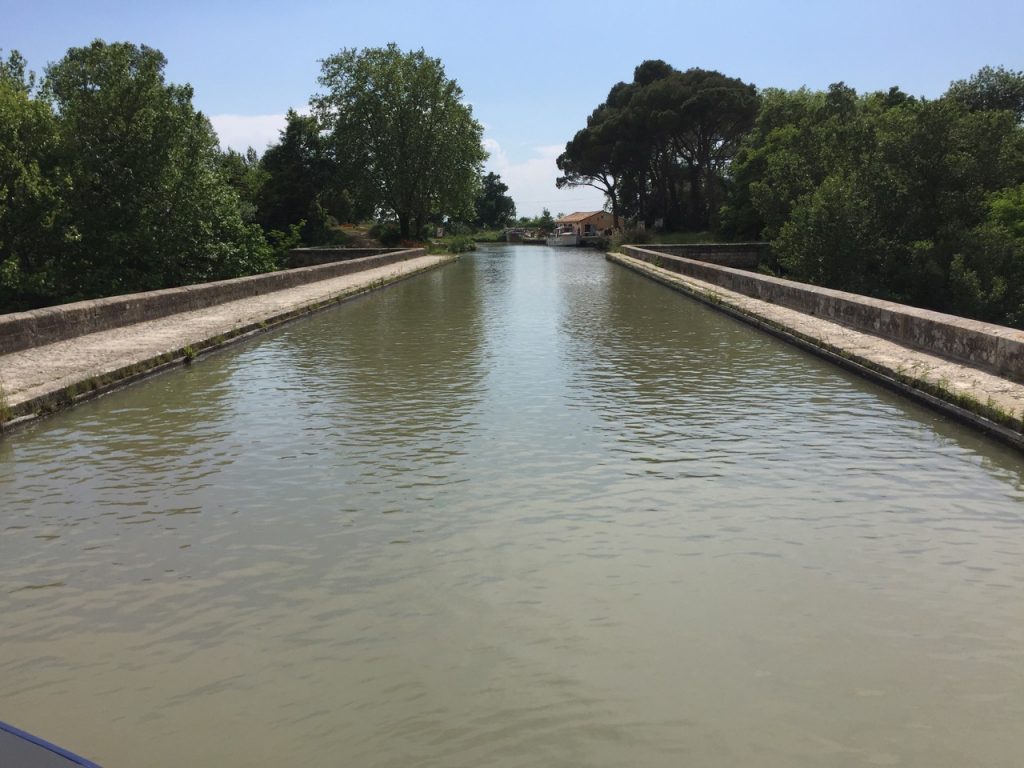
We enjoyed one lock where the éclusier had created a sculpture garden.
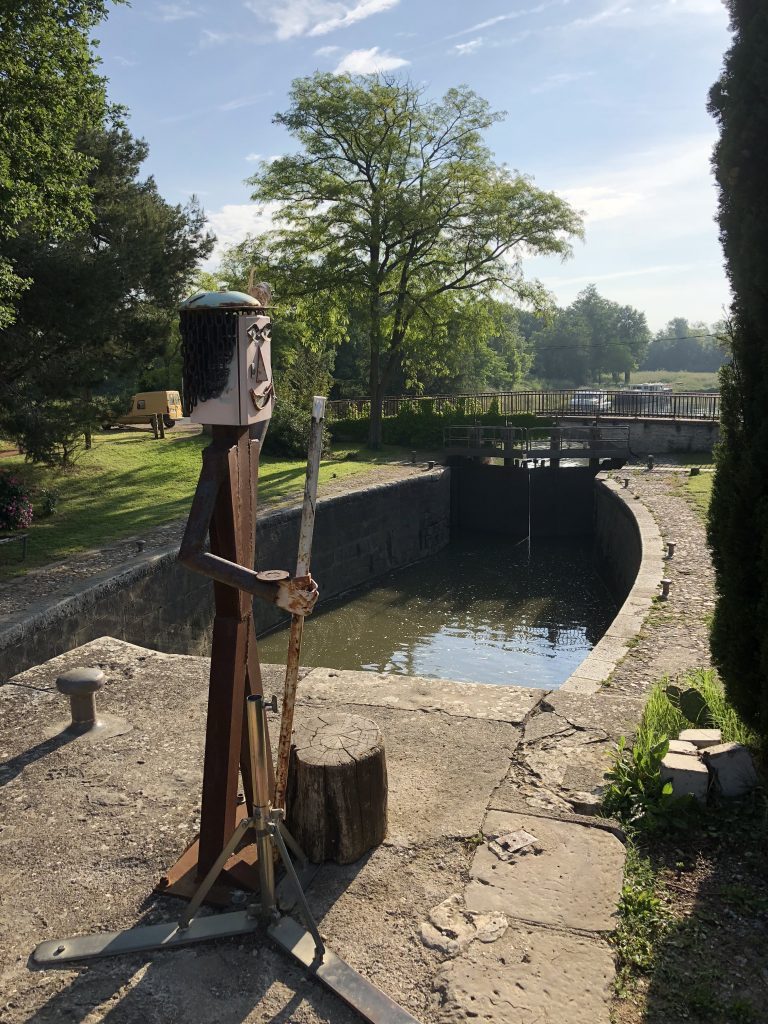
Some of them might be considered ‘Not Suitable for Work.’
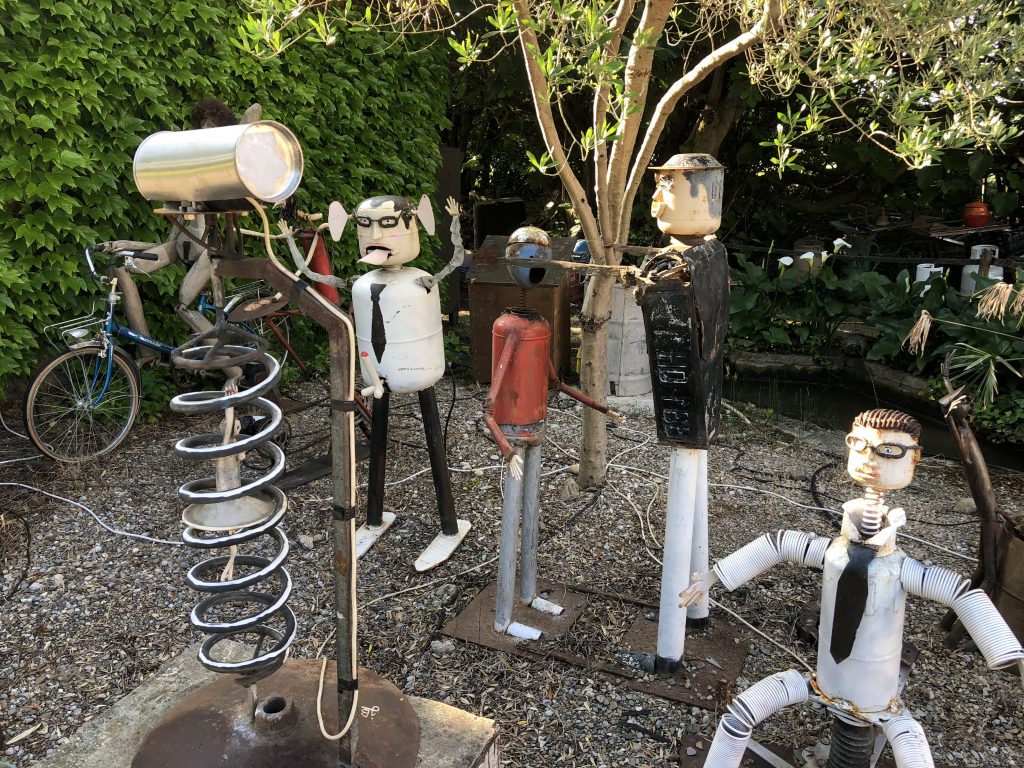
The sculptures brought smiles to our faces. Pretty soon, we would really need those smiles. It was the last break we would get.
There were many towns and restaurants that looked inviting – if only we could stop.
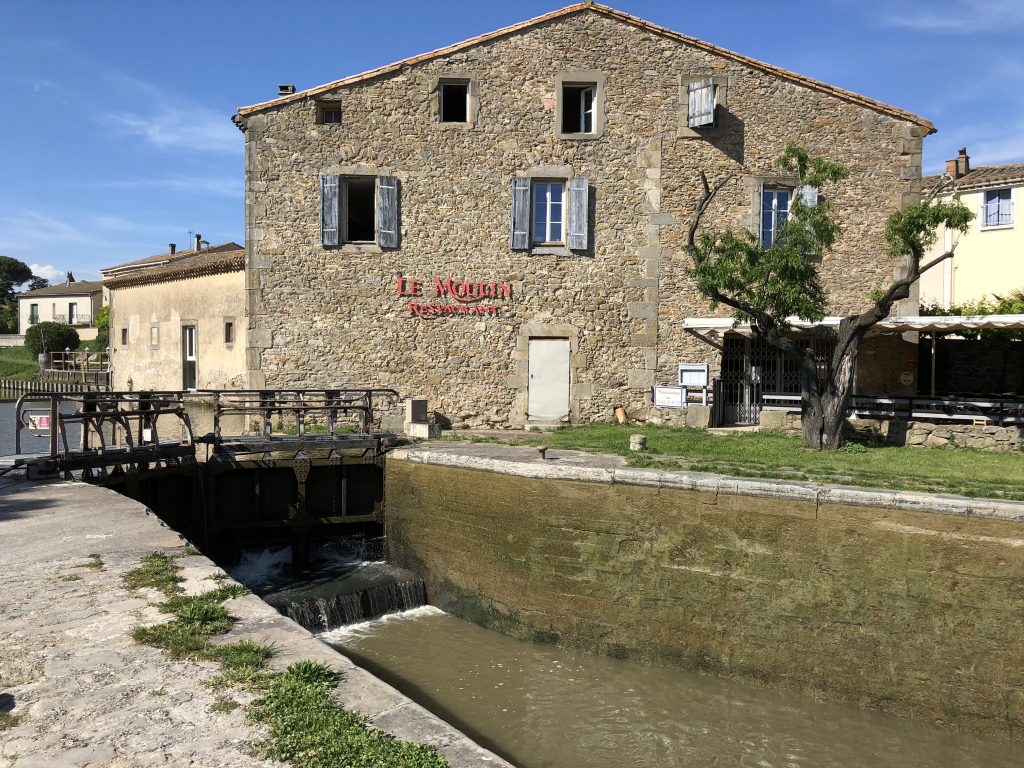
It looks lovely from this direction.
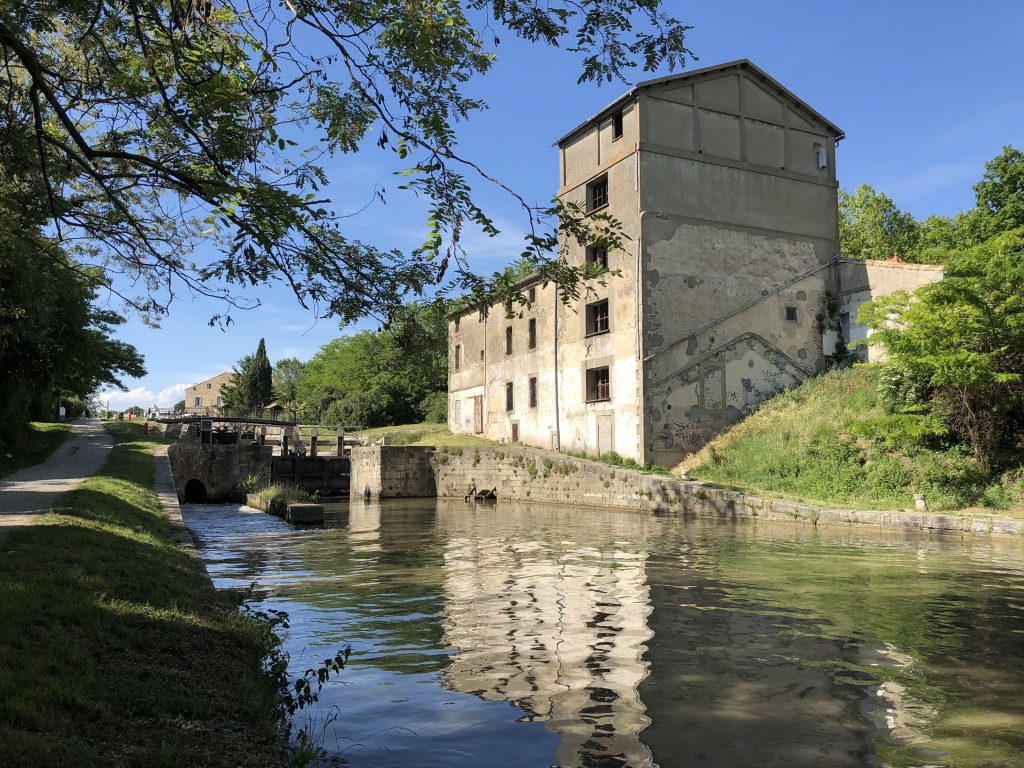
Turn around and you can see why this was becoming the trip from hell.
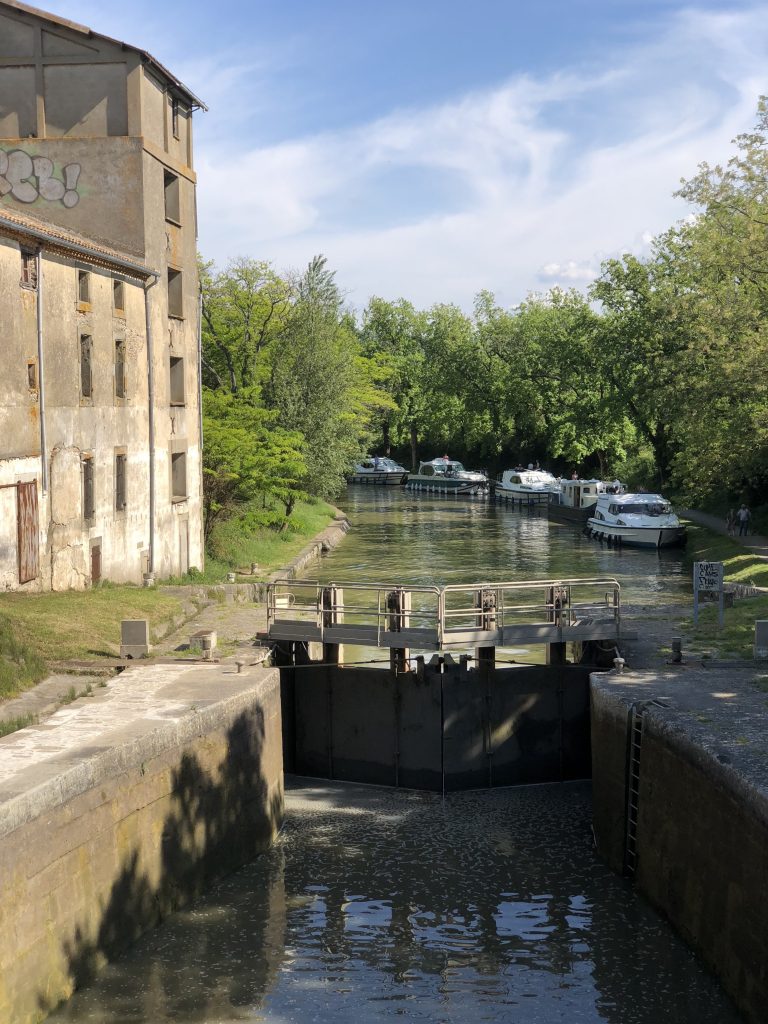
All those other boats in the shot above are traveling with us. Sort of. The company that owns Bosun Higgs had put a governor on our engine. We can go no faster than 5 km/h. I had no problem with that. Any faster and the wash from our boat would erode the banks.
Unfortunately, the other boats did not have governors. We watched as they sped by us. By the time we reached the next lock, we were number seven or eight in line. We would have to wait for a few cycles of the lock – to fill, to empty, to fill, to empty…etc.
When we rented Bosun Higgs, we had one week to get from Capestang to Castelnaudary. It had to be returned by 9am Saturday. There would be a fine of 100 euros for each hour we were late. And the company had our credit card info. Each time we waited to get into a lock, I saw €100 notes getting swept away in the rushing water.
It’s 124 kilometres from Capestang to Castelnaudry. There are 33 locks – at least on paper. In reality, there are a lot more. Many of them are double and triple locks. They take much longer to pass through. We were getting farther and farther behind schedule. We watched with envy as we saw people dining at restaurants along the canal.
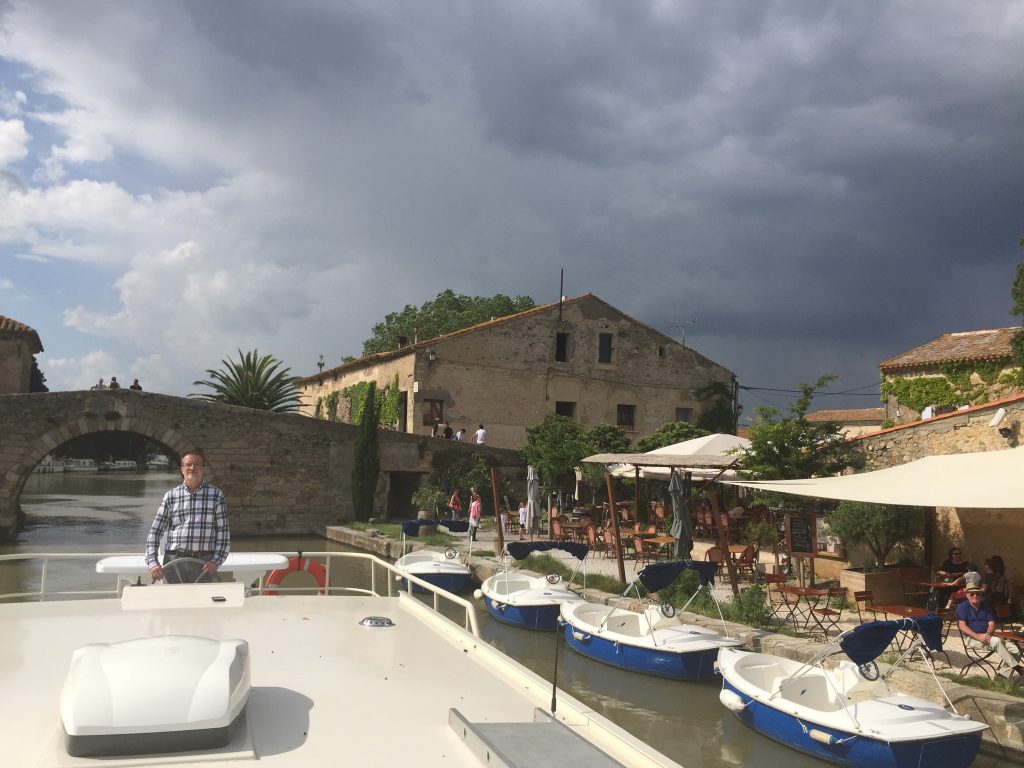
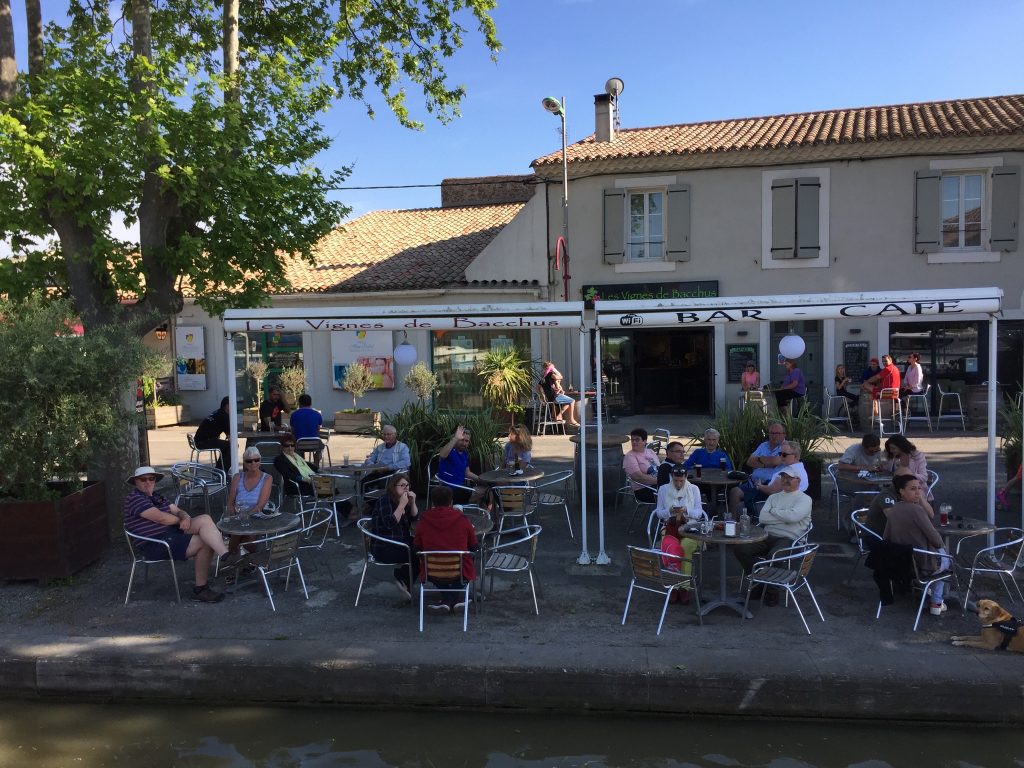
We couldn’t stop. The clock was ticking. While I had researched interesting towns to explore along the way – and places we could eat – we had to pass by every one. We ate onboard when the locks closed for lunch and when they closed for the night.
At each lock, we fell further and further behind. More €100 notes floating by.
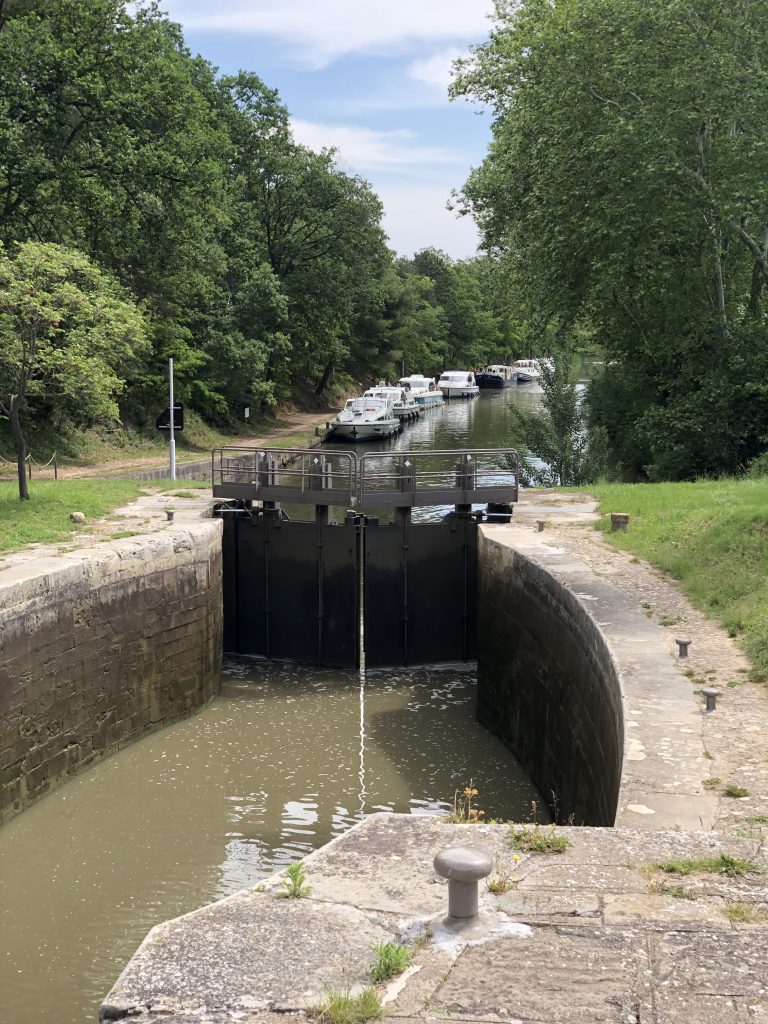
The last straw came at one lock where we waited – and waited – and waited. Nothing was happening. After a few hours, we learned the VNF was on strike. We wouldn’t be going anywhere. We knew it was now impossible to make it to Castelnaudry on time. Our traveling companions were facing a different deadline. They had plane tickets back to Canada. They had to start making their way to Paris and their flight home. I phoned the rental company and told them we were abandoning ship. We would leave Bosun Higgs at the marina in Carcasonne – a little more than half of the voyage we had planned. The rental company was adamant we could not do that. But we had their boat. And we had canceled our credit card. Below, Bosun Higgs abandoned in Carcassonne.
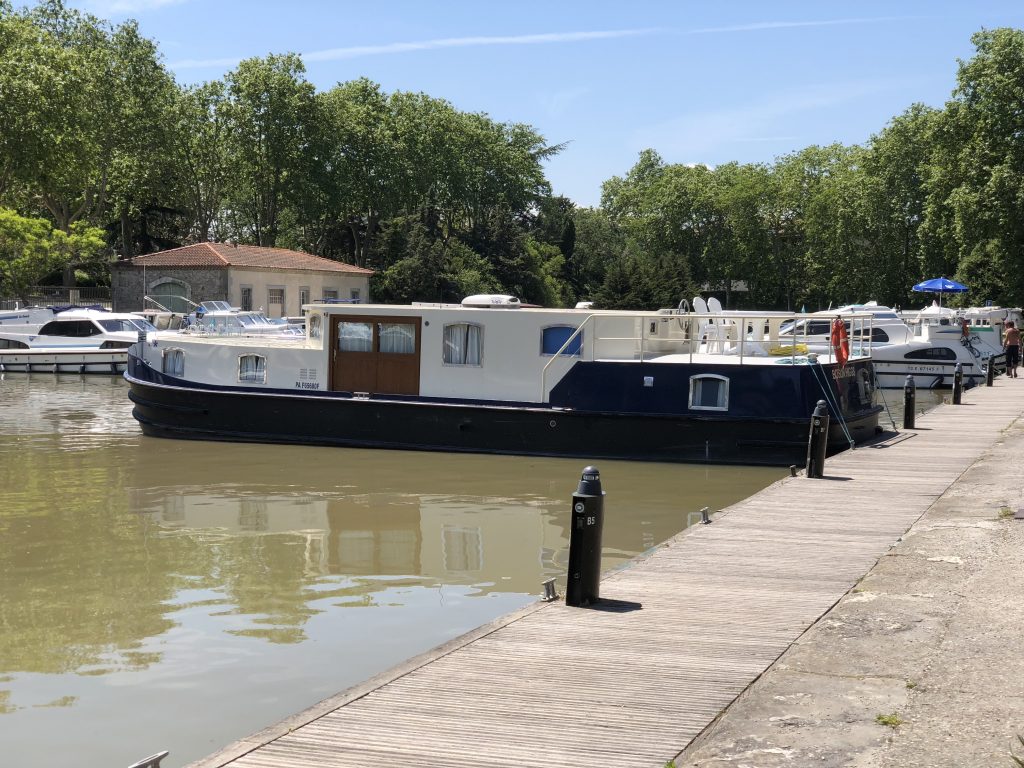
Feeling relaxed for the first time in almost a week, we had a chance to explore Carcassonne – including the temporary paint job that had been added to the fort at the top of the hill.
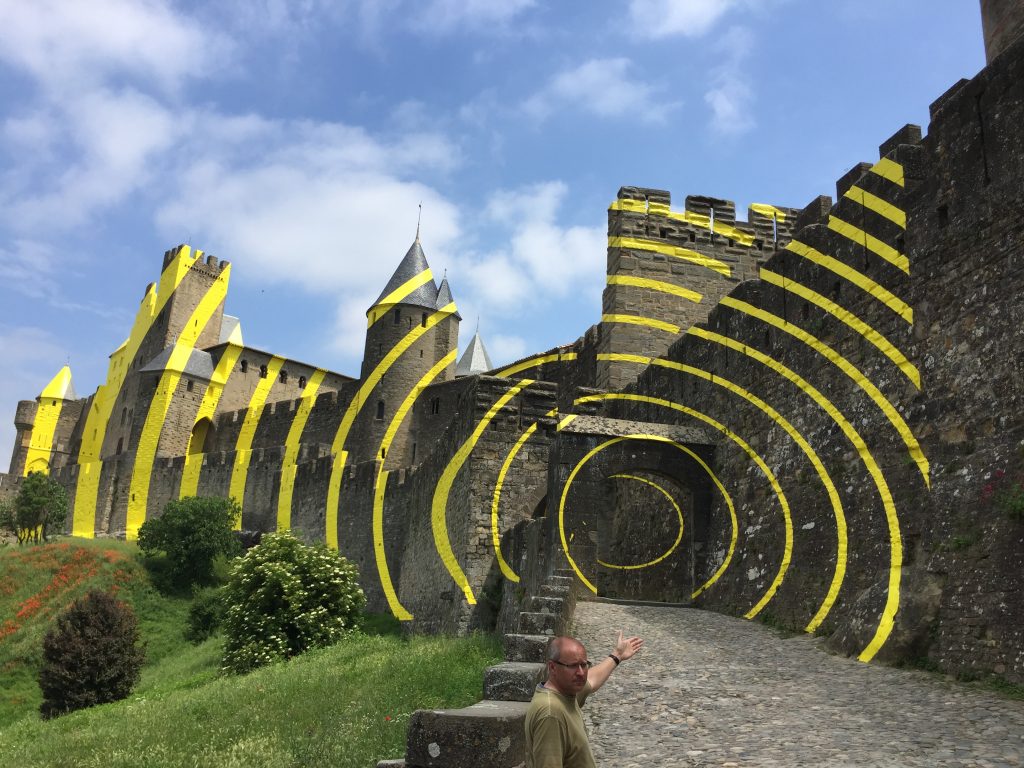
Looking back at the “Voyage from Hell,” it was just what we needed. Jeannie and I realized that never again would we rent. We want to set our own schedule – go where we want, stop where we want, and stay as long as we want. The only option – buy our own barge.
We spent a lot of time looking – searching ApolloDuck.com and the DBA website. We even went with a surveyor to check one out one barge in Belgium. Don’t buy it, he said. We were striking out. I called Piper Boats to inquire about having one built. The cost was beyond our means – but they did know of one that might be for sale. The rest, as they say, is history. In May 2019, we took possession of Aleau – although it was called Gillian B at the time.
As we cruised, Jeannie and I decided we like this lifestyle. We like France. Any anxiety she had about the water evaporated. Now, we must decide if we want to pack up everything we have in Canada and make France our permanent home. We are leaning in that direction.
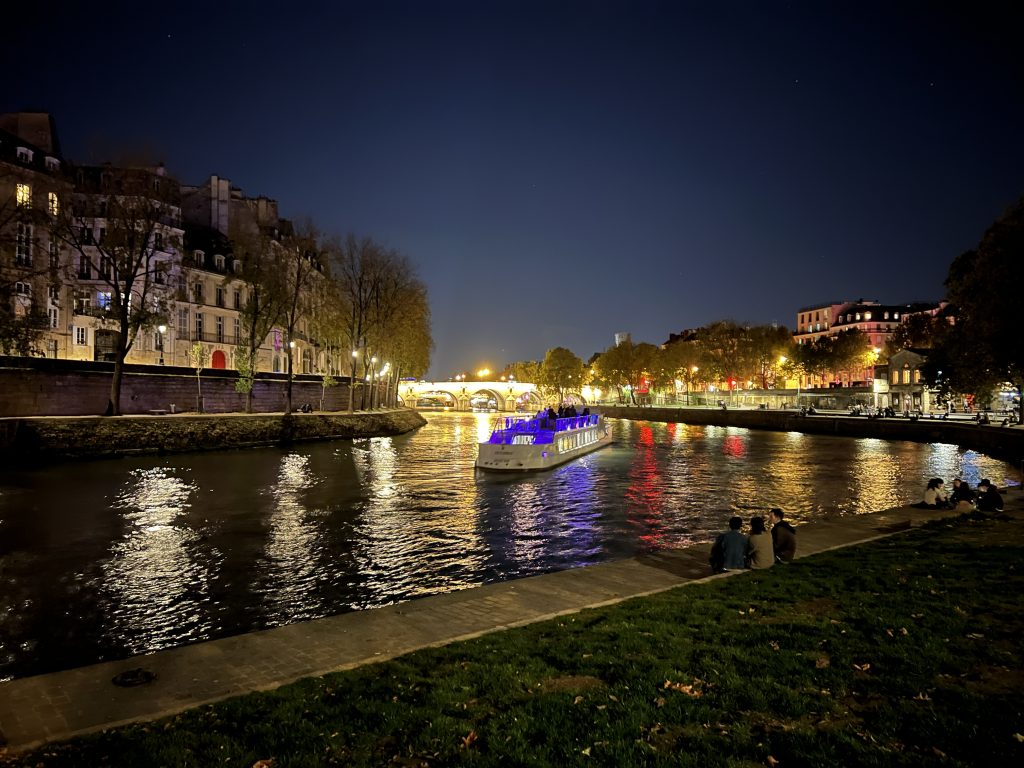
That is how it all evolved. The answer to the question at the top of the page, “How did you end up doing this?” But there is another, frequently asked, question. “What boating experience did you have before buying Aleau?” Aleau is 20-meters long. It is hard for some people to imagine getting behind the wheel never having had a boat before. That’s not completely true.
When I was four-years-old, my father took me to a park that had boats for children. I guess I liked it.
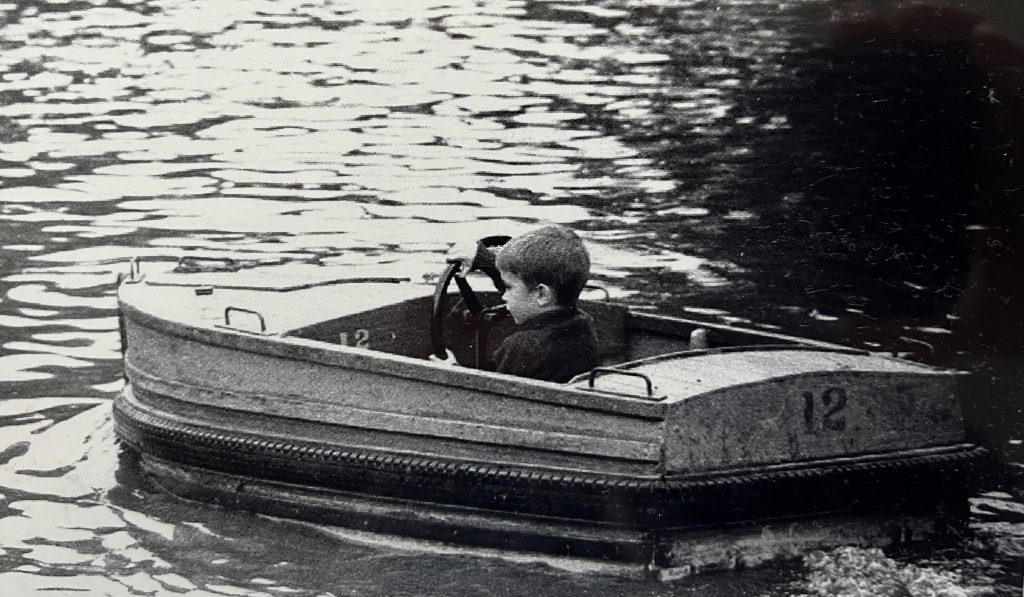
While working at the CBC, I saved enough money to buy a 1967 Amphicar.
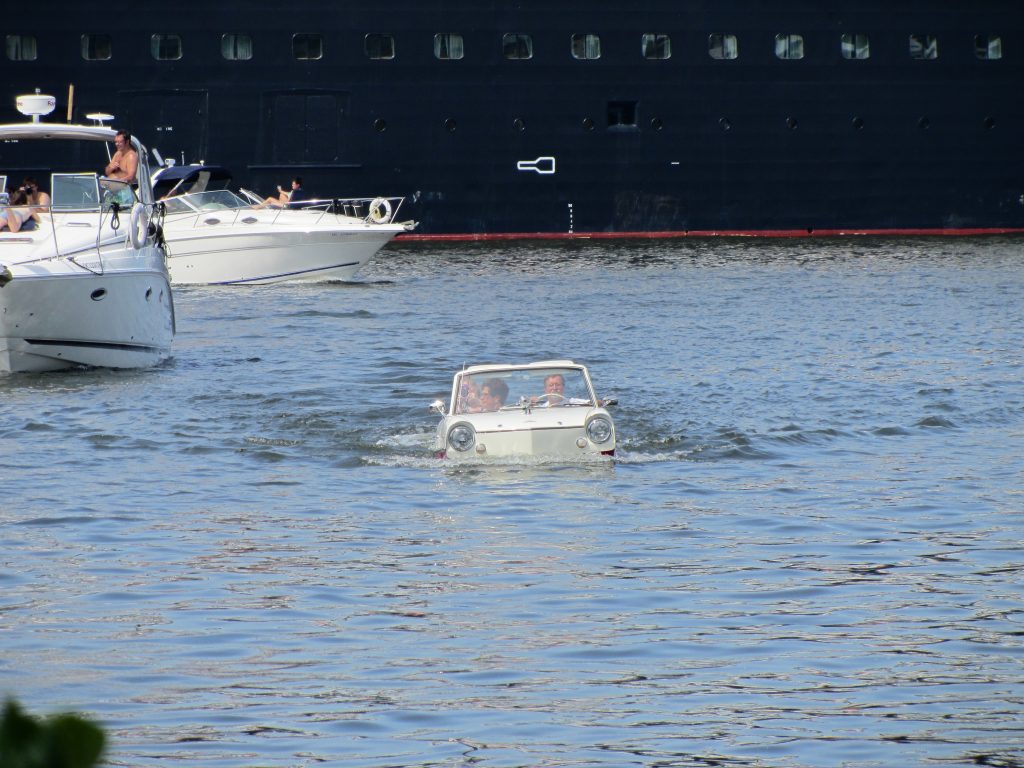
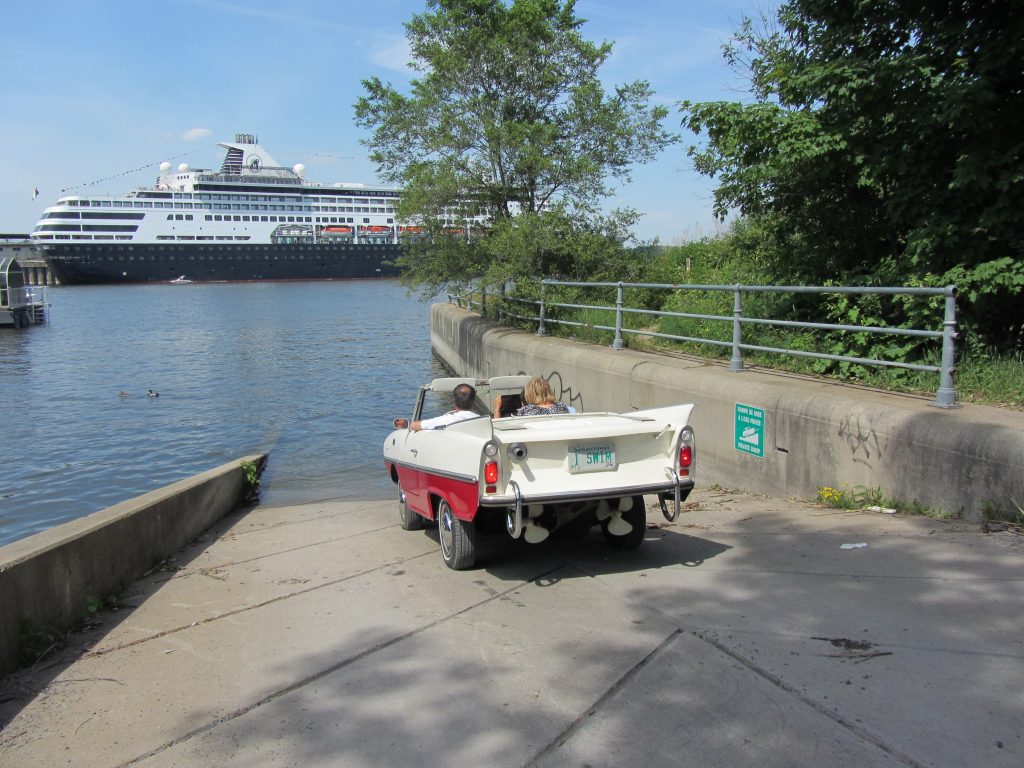
Not being content with an amphibious car, I bought an amphibious bicycle which I call the Amphibike.
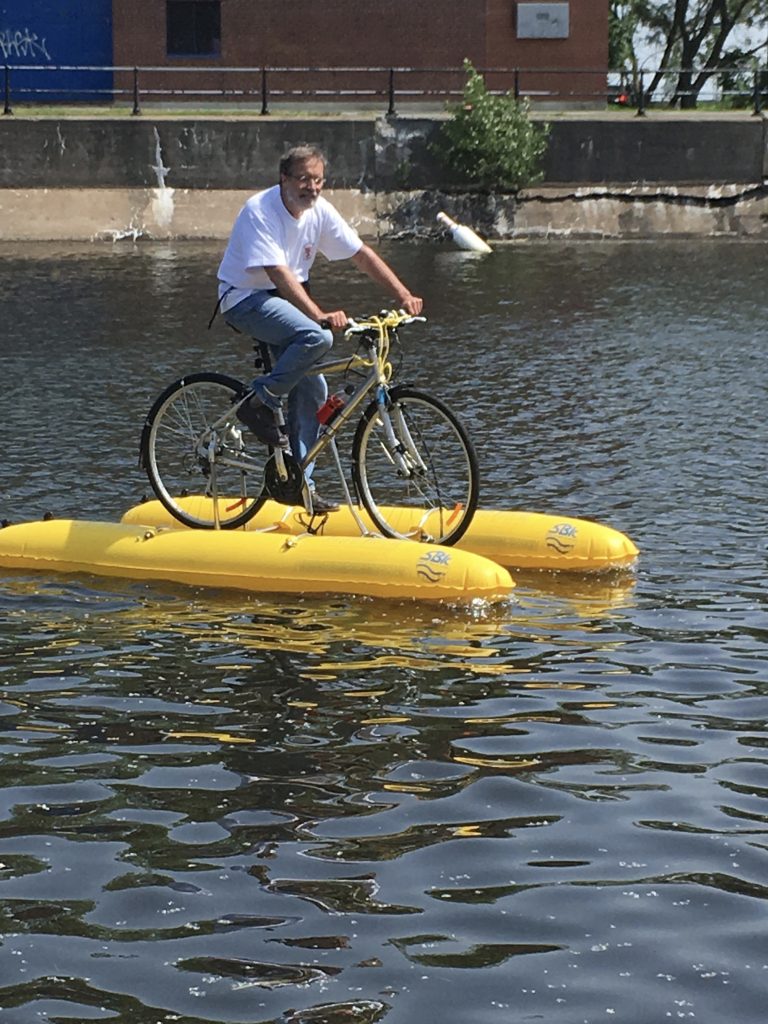
It fits in a backpack.
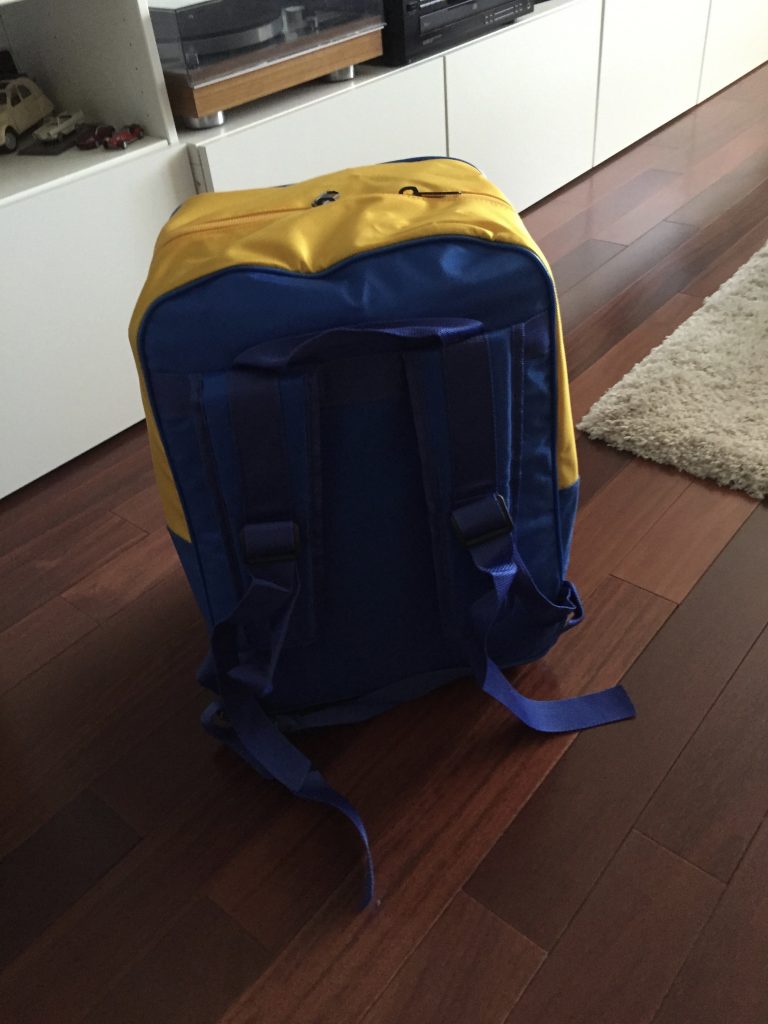
Once at the water, it takes a few minutes to assemble and use a pump powered by the bike’s rear wheel to inflate the pontoons.
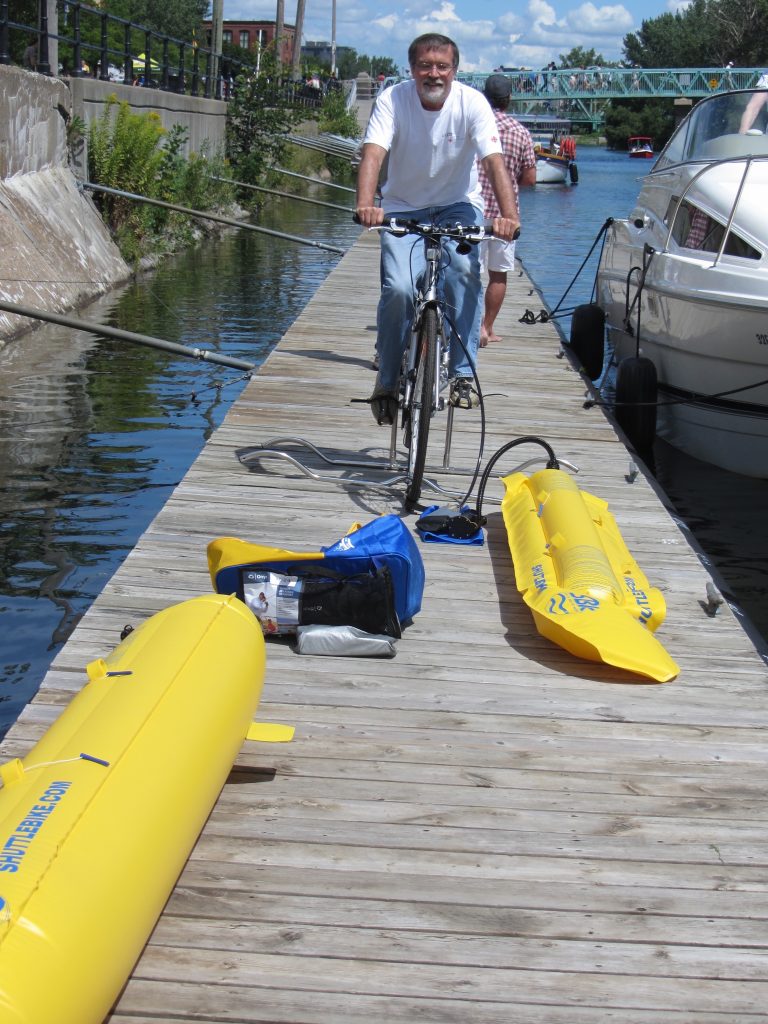
There you have it… How Jeannie’s and my life on a barge in France came about.
From this…

To this…

How previous boating experience went from this…
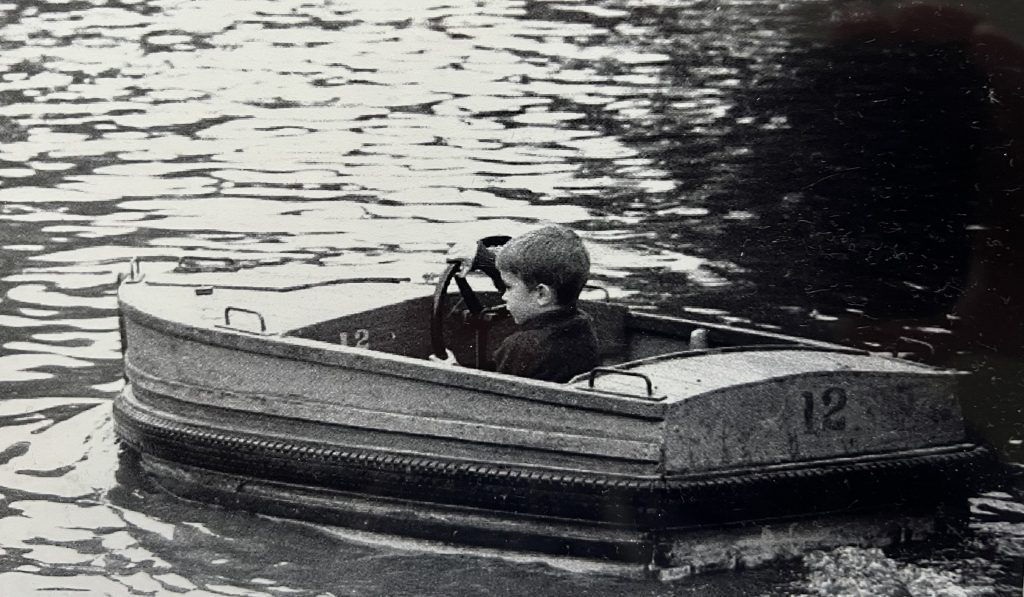
To this…
